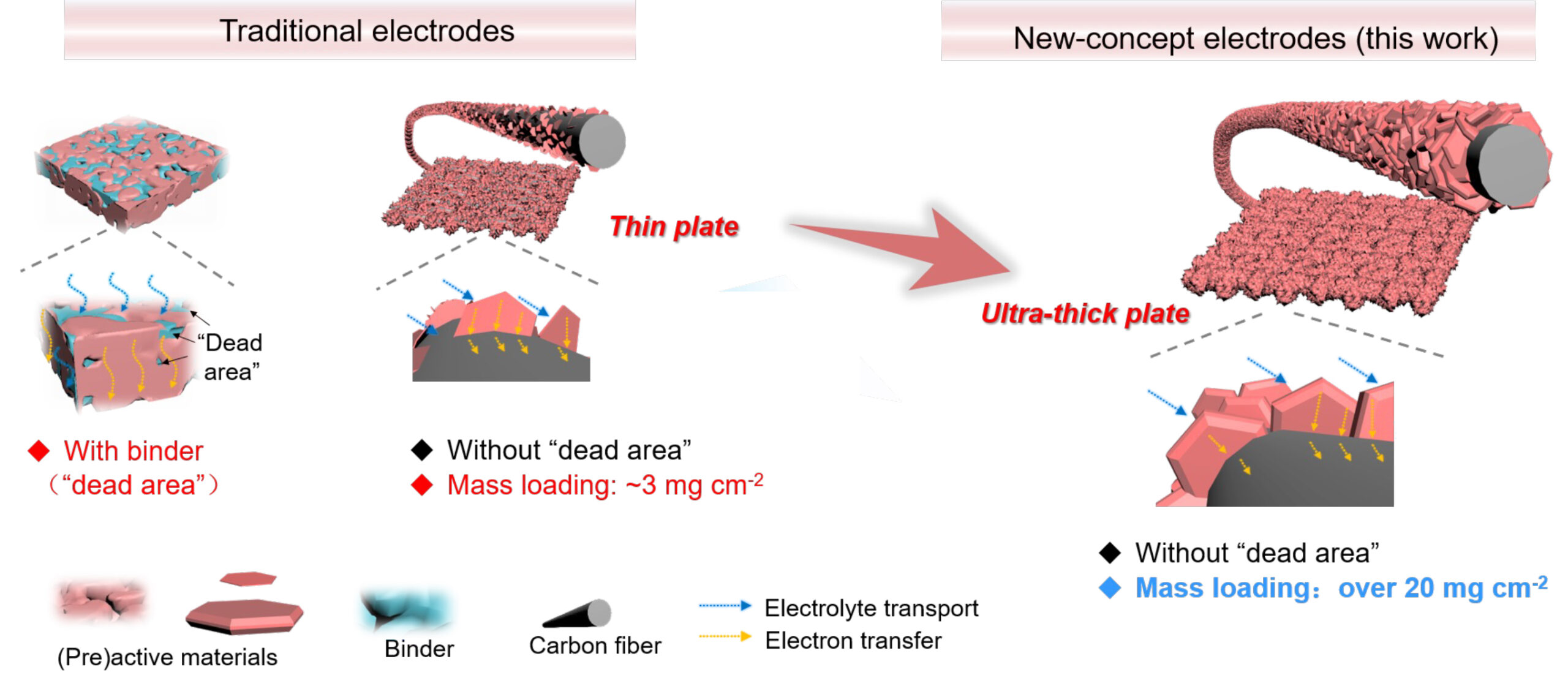Like batteries, supercapacitors are a type of energy-storage device. However, while batteries store energy electrochemically, supercapacitors store energy electrostatically—through the buildup of charge on their electrode surfaces. Hybrid supercapacitors (HSCs) combine the advantages of both systems by incorporating battery-type and capacitor-type electrodes.
Despite synthesis techniques that allow the active components in HSC electrodes to grow directly on conductive substrates without added binders (“self-supporting” electrodes), the fraction of active material in these electrodes has remained too low for commercial requirements. Now, researchers have found a clever way to increase the active-mass ratio to achieve dramatic improvements in key measures.
“Hybrid supercapacitors integrate the merits of high energy and power densities, long cycle life, and safety, and have emerged as a promising frontier in electrochemical energy storage,” said the study’s first author Wei Guo, a scientist at Northwestern Polytechnical University in China. “In our paper, we propose a novel mechanism for creating a versatile family of two-dimensional superstructures that overcome the traditional low active-mass ratio of self-supporting electrodes.”
Here, researchers studied a form of nickel hydroxide, β-Ni(OH)2, which crystallizes from solution into thin, plate-like structures on a carbon-fiber substrate. Adding NH4F to the reaction solution replaces one hydroxide ion with a fluoride ion. The resulting Ni-F-OH plates grew up to 700 nm thick and had a high mass loading (active mass per cm2) of 29.8 mg cm-2—up to 72% of the electrode mass.
A number of theoretical and experimental analyses—including x-ray absorption spectroscopy (XAS) at Advanced Light Source (ALS) Beamlines 7.3.1 and 8.0.1, and scanning transmission x-ray microscopy (STXM) at Beamline 5.3.2.2—were used to understand the mechanism underlying the new morphology. The results revealed that the added F– ions tune the plates’ surface energy (a major factor in the growth of nanocrystals), while NH4+ ions consumed excess local OH–, suppressing re-formation of the undesirable β-Ni(OH)2 phase. Moreover, based on the same methodology, the researchers were able to produce other bimetallic superstructures and their derivatives, signaling the rise of a versatile new family of metal-based hydroxides for novel energy-storage systems to meet future demands.

W. Guo, C. Dun, M.A. Marcus, V. Venturi, Z. Gainsforth, F. Yang, X. Feng, V. Viswanathan, J.J. Urban, C. Yu, Q. Zhang, J.-H. Guo, and J. Qiu, “The Emerging Layered Hydroxide Plates with Record Thickness for Enhanced High-Mass-Loading Energy Storage,” Adv. Mater. (2023), doi:10.1002/adma.202211603.